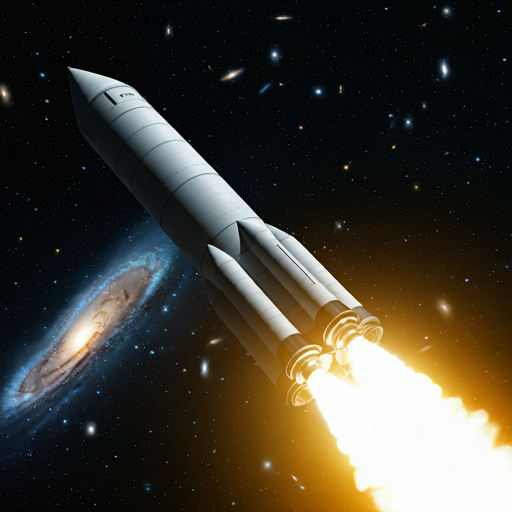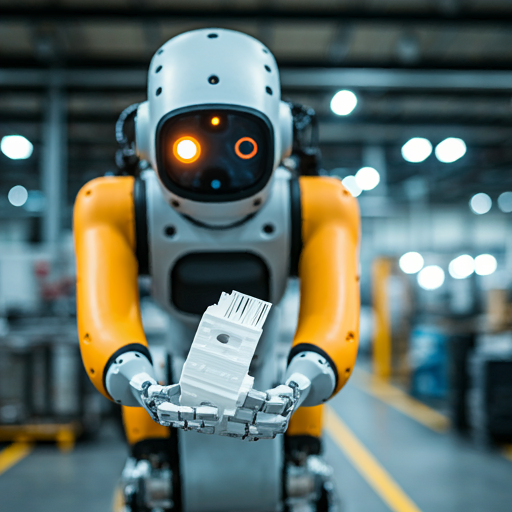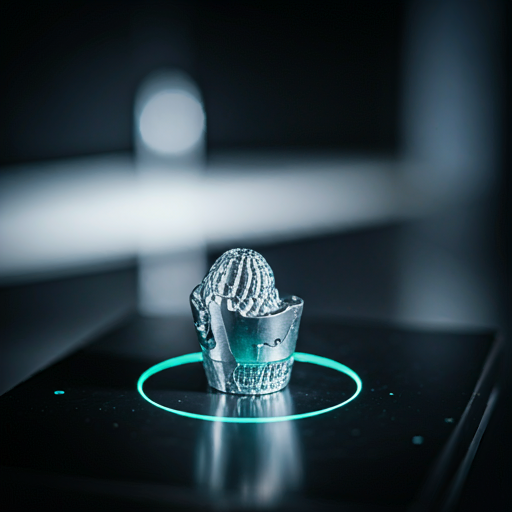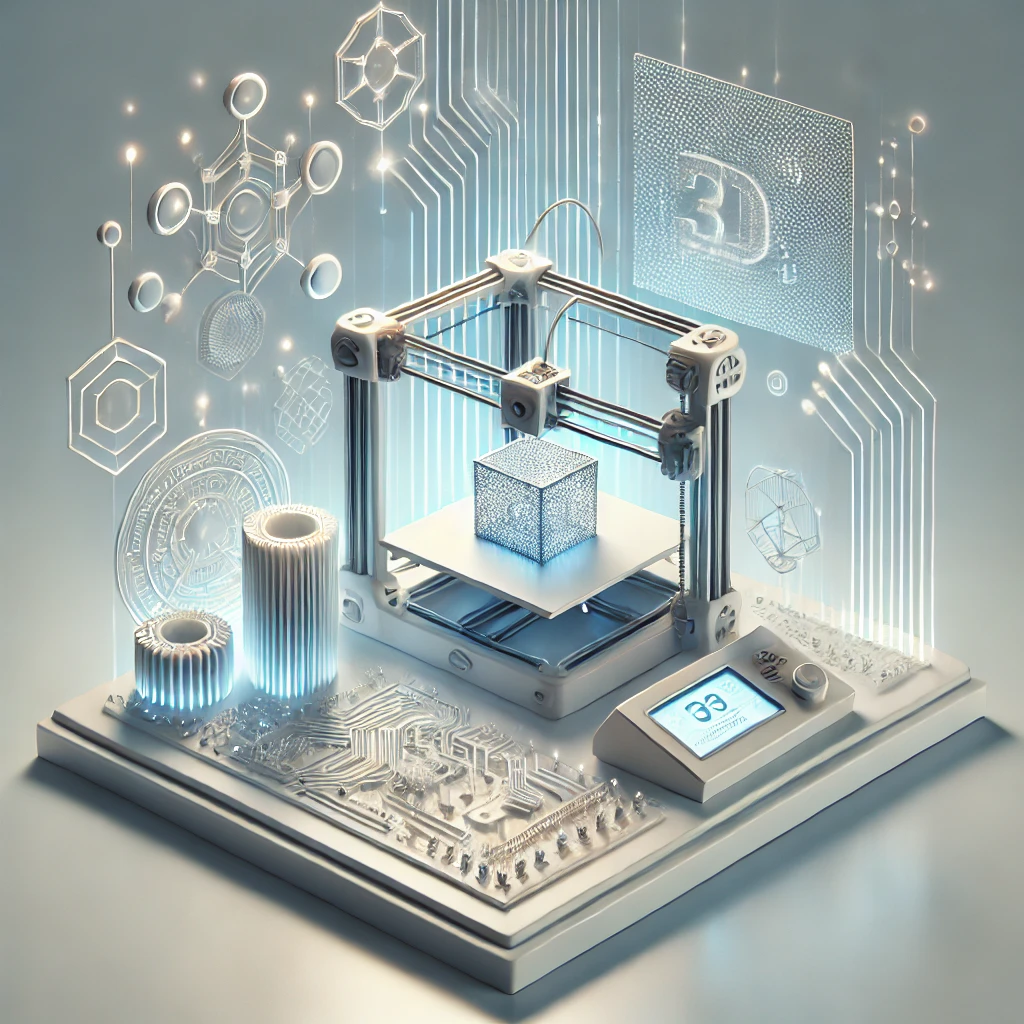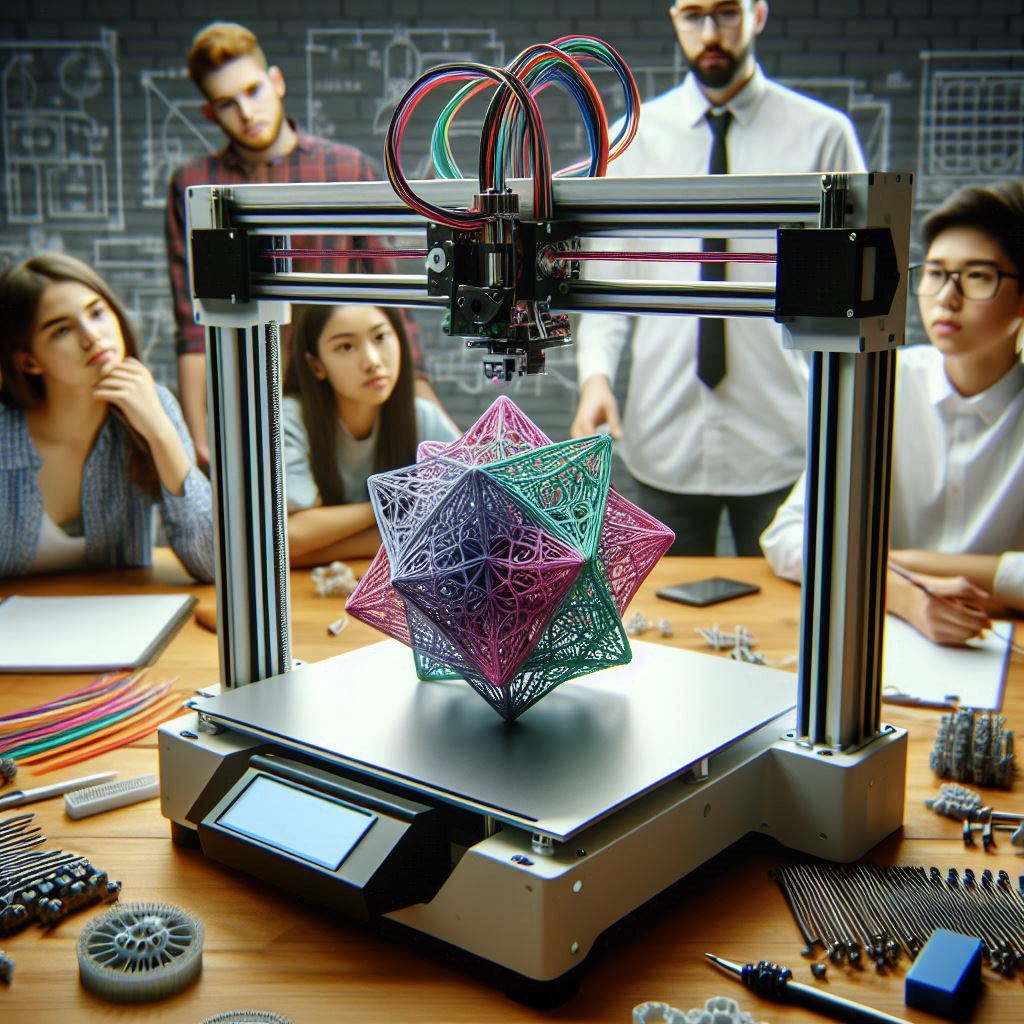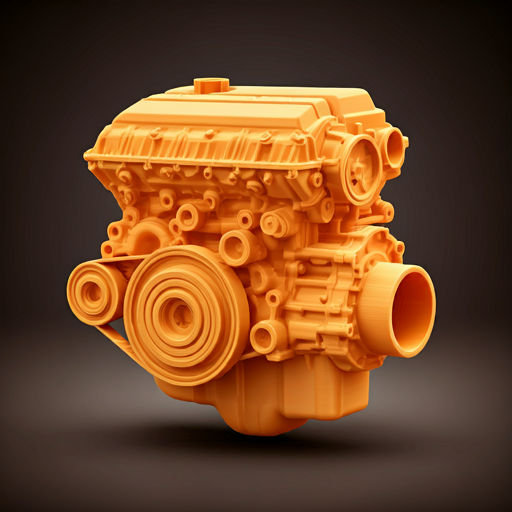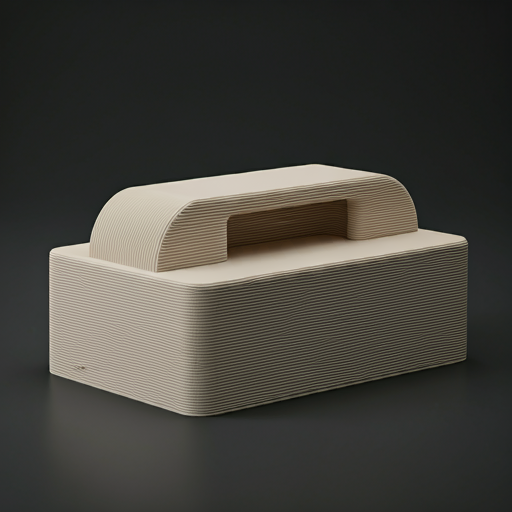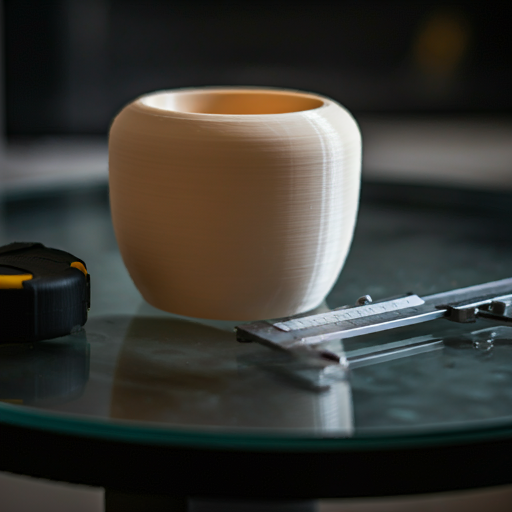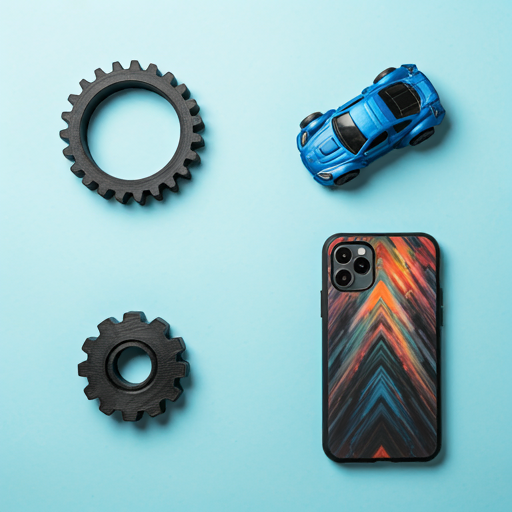
Introduction
3D printing, or additive manufacturing, has dramatically transformed product design and manufacturing processes. It enables the rapid and precise creation of physical models from digital designs, playing a crucial role in rapid Prototyping. Rapid Prototyping is essential across numerous industries, facilitating quicker innovation, cost savings, and enhanced product development cycles. This comprehensive Guide aims to provide an in-depth understanding of rapid Prototyping, focusing on 3D printing technologies, applications, and future trends.
3D printing has been rapidly advancing in recent years. One of the most exciting applications of this technology is in the field of industrial prototyping. This is the process of creating a physical model of a product or design, which can be used to test and evaluate its design, function, and performance. One of the key advantages of 3D printing for industrial prototyping is its ability to create complex geometries which includes features such as internal cavities, undercuts, and overhangs, which are often found in complex mechanical and aerospace parts.
3D printing has revolutionized the way industrial prototypes are created, as it allows for rapid prototyping and the ability to create complex, intricate designs that would be difficult or impossible to produce using traditional manufacturing methods. This technology has made it possible to produce prototypes in a fraction of the time and at a fraction of the cost of traditional methods, making it an ideal solution for companies that need to get their products to market quickly and efficiently.
What is Rapid Prototyping?
Definition and Basic Principle
Rapid Prototyping is a group of techniques to fabricate a scale model of a physical part or assembly using three-dimensional computer-aided design (CAD) data. The primary principle of rapid Prototyping is to create a physical prototype layer by layer, which allows designers to test and refine design concepts efficiently.
Historical Context and Evolution
The concept of rapid Prototyping emerged in the late 1980s with Chuck Hull's invention of stereolithography (SLA). Over the years, rapid Prototyping has evolved significantly, with advancements in technology leading to the development of various methods that enhance speed, accuracy, and material diversity. Initially, these technologies were costly and limited to industrial applications, but they have since become more accessible, enabling widespread use across different sectors.
How Rapid Prototyping Works?
The rapid prototyping process generally involves the following steps:
- CAD Modeling : The initial step involves designing the prototype using CAD software. This digital Model must accurately represent all design aspects and specifications.
- Data Conversion : The CAD file is converted into an STL format, translating the design into a format the prototyping machine understands. The STL file describes the surface geometry of the 3D object without representing color, texture, or other attributes.
- Prototyping : The converted file is sent to the prototyping machine. The machine constructs the model layer by layer, using the specified material and method.
- Post-Processing : This step includes removing any support structures, surface finishing, and other necessary refinements to achieve the desired final product.
What is 3D Prinitng ?
Definition and Basic Principle
3D printing is a type of additive manufacturing process that creates a physical object from a digital model by laying down successive layers of material. Each layer is precisely placed to form the final shape, allowing for complex geometries and intricate designs.
Is Rapid Prototyping and 3D Printing the Same ?
Explanantion of Differences
Rapid Prototyping and 3D Printing are often used interchangeably, but they differ. Rapid Prototyping encompasses many techniques for quickly creating prototypes, whereas 3D Printing is a specific method within this broader category. While all 3D Printing can be considered rapid Prototyping, not all prototyping techniques involve 3D Printing.
How 3D Printing Fits into the Broader Category ?
3D Printing is a subset of rapid Prototyping known for its speed, accuracy, and ability to produce complex designs. Other methods, such as CNC machining and injection molding, follow rapid Prototyping but differ in process and application.
Types of Rapid Prototyping Technologies
There are several rapid prototyping technologies, each with unique advantages:
Additive Prototyping:
This includes 3D printing technologies such as:
1.Fused Deposition Modeling (FDM):

Fused Deposition Modeling, also known as Fused Filament Fabrication, is the most widely used type of 3D printing technology for prototyping. It works by heating a thermoplastic material and extruding it through a nozzle, layer by layer, to build a model. This technology is widely used for making prototypes of plastic parts and small mechanical components. The materials used for FDM printing are low cost, making it an affordable option for many small businesses and entrepreneurs.
2.Stereolithography (SLA):

Stereolithography is a popular type of 3D printing technology that uses a laser to cure a photo-sensitive resin. This process involves the laser tracing a pattern of the object to be printed, layer by layer, in a vat of resin. As each layer is cured, it bonds to the previous layer, creating a solid object. SLA printing is often used for creating prototypes of intricate and highly detailed parts, such as jewelry, dental implants, and complex electronic components.
Digital Light Processing (DLP)
DLP is similar to SLA but uses a digital light projector to cure photopolymer resin. It offers high speed and resolution, making it suitable for intricate designs and detailed prototypes.
3.Selective Laser Sintering (SLS):

Selective Laser Sintering is a 3D printing technology that uses a laser to heat and fuse powdered materials, such as nylon, into a solid object. This technology is often used for making prototypes of high-strength parts and components. SLS printing is a highly accurate and efficient process that produces parts with good surface finish and dimensional accuracy. The materials used in SLS printing are also durable and heat-resistant, making it a popular choice for prototyping functional parts.
4.Multi Jet Printing (MJP):

Multi Jet Printing is a 3D printing technology that uses multiple jets of material to build up a model layer by layer. The jets are controlled by a computer, which directs them to the precise location where material is required. This technology is often used for creating prototypes of intricate and complex parts, such as mechanical gears and engine components. Multi Jet Printing offers high precision and accuracy, and is able to produce parts with fine details and smooth surfaces.
5. Direct Metal Laser Sintering (DMLS):

It's a process that uses a laser or an electron beam to melt and deposit metallic powders onto a substrate, building the object layer by layer. This technology is known for its high precision and high-quality prints, and it's the perfect fit for creating intricate and detailed automobile components.
Subtractive Prototyping:
Involves removing material from a solid block to create a prototype. Standard subtractive prototyping methods include:
- CNC Machining : Computer-controlled machines cut, drill, and mill material from a solid block to form the desired shape.
- Laser Cutting : Utilizes a laser to cut precise shapes from metal, plastic, or wood.
Compressive Prototyping:
This technique involves forming materials into the desired shape using compressive forces. Examples include:
- Injection Molding : Involves injecting molten material into a mold to produce parts quickly and efficiently. It is ideal for creating multiple copies of a prototype.
- Vacuum Casting : Uses silicone molds to create detailed prototypes from a master model, typically for low-volume production.
Benefits of 3D Printing for Rapid Prototyping
3D printing is a versatile technology that has revolutionized how prototypes are created. Here are some of the critical advantages of using 3D printing for prototyping:
- Speed : 3D printing enables rapid prototyping, as it can produce a physical model in hours or even minutes, depending on the complexity of the design. This allows for faster iterations and quicker product development.
- Cost-Effectiveness : 3D printing eliminates the need for expensive molds and tooling, which can result in significant cost savings. Additionally, the cost per unit decreases as the quantity increases, making it an even more cost-effective option for small-scale production runs.
- Design Freedom : 3D printing creates highly complex and intricate designs that would be difficult or impossible to produce using traditional manufacturing methods. The ability to print in various materials also gives designers more options for creating functional prototypes.
- Customization : 3D printing allows for the production of highly customized prototypes tailored to the specific needs of the product or application. This can include custom geometries, particular materials, and even embedded functionality.
- Reduced Waste : 3D printing allows for the creation of only the necessary number of prototypes, reducing material waste and the environmental impact of manufacturing.
- Visual Aid for Presentations : 3D-printed prototypes can be visual aids for communicating design ideas and concepts to clients, stakeholders, or team members. The physical models can also be used for testing and validation, providing valuable feedback for design improvements.
- Flexibility : 3D printing can create prototypes in various materials, including plastics, metals, ceramics, wood, and food. This allows for producing prototypes with a wide range of properties, such as flexibility, strength, and durability.
- Accessibility : 3D printing technology has become more accessible and affordable, making it possible for small businesses, startups, and individuals to create prototypes. The software and hardware required for 3D printing have also become more user-friendly, allowing easy operation and maintenance.
Applications of 3D Printing for Rapid Prototyping
Automotive Industry
In the automotive industry, 3D Printing is used to create prototypes of car parts, enabling rapid testing and modification. This technology allows for the quick development of functional prototypes, which can be tested for performance and fit before mass production.Know more
Aerospace Industry
The aerospace sector leverages 3D Printing for lightweight and complex components, enhancing performance and fuel efficiency. Prototypes for aerospace components can be quickly produced and tested, ensuring they meet stringent safety and performance standards. Know more
Healthcare and Medical Devices
3D Printing is revolutionizing healthcare by enabling the production of custom prosthetics, implants, and anatomical models for surgical planning. Medical professionals can use 3D-printed models to understand patient-specific anatomy better and plan complex surgeries with greater precision.Know more
Consumer Goods
Manufacturers use 3D Printing to develop prototypes for consumer products, from household items to electronic devices, ensuring functional and aesthetic quality. This process allows for rapid iteration and testing of new designs, improving product development timelines.Know more
Architecture and Construction
In architecture, 3D Printing creates detailed models of buildings, providing a tangible representation of the final design. In construction, 3D printing aids in producing complex structural components, offering new possibilities for innovative building techniques and materials.Know more
Choosing the Right 3D Printer for Prototyping
Factors to Consider
Choosing the right 3D Printer for Prototyping depends on several factors:
- Material Compatibility : Ensure the Printer supports the materials needed for your prototypes.
- Build Volume : The Printer should accommodate the size of the prototypes you intend to create.
- Resolution : Higher-resolution printers produce more detailed and accurate prototypes.
- Cost : Consider the cost of the Printer, materials, and maintenance.
- Speed : Evaluate how quickly the Printer can produce prototypes, especially if you must iterate rapidly.
- Ease of Use : User-friendly interfaces and support can significantly impact productivity.
Prototypes for Product Development

3D printing technology has revolutionized the way prototypes are created for product development. This technology enables product designers and engineers to quickly and easily create physical models of their designs, which can be used to test and evaluate their functionality and performance.
The unique advantage of 3D-printed prototypes in product development lies in their unmatched versatility. They can effortlessly bring to life complex geometries and shapes, including internal cavities, undercuts, and overhangs, often found in intricate mechanical and aerospace parts. This opens up a world of possibilities for your designs.
Step-by-Step Guide to 3D Printing a Prototype

- Designing the Prototype : Begin by creating a detailed CAD model of your prototype. Ensure all dimensions and features such as size, strength, flexibility, and any functional features that need to be incorporated meet the design specifications.You can read more regarding designing the prototype.
- Preparing the 3D Model : Convert the CAD model into an STL file. Check the Model for any errors or imperfections that could affect the printing process.You can read more regarding preparing the 3d model.
- Choose a 3D Printing Technology : Several 3D printing technologies are available, including Fused Deposition Modeling (FDM), Stereolithography (SLA), Selective Laser Sintering (SLS), and Directed Energy Deposition (DED). Each technology has its own unique set of capabilities, strengths, and limitations. Choose the one that best suits your specific needs and requirements. You can read more regarding 3D printing technologies.
- Choose the Right Material : The next step is to choose the suitable material for your 3D print. The choice of material will depend on the specific requirements of the prototype, such as strength, flexibility, and heat resistance. Some of the most common materials used for 3D printing include ABS, PLA, TPU, Nylon, and others. You can read more regarding materials
- Slicing the Model : Slicing software converts the STL file into G-code, which the 3D Printer uses to build the object. Adjust settings such as layer height, print speed, and support structures. You can read more regarding slicing procedures.
- Setting up the 3D Printer :prepare the Printer by loading the appropriate material and ensuring the build platform is clean and level. Configure the printer settings according to the slicing software's recommendations.
- Printing the Prototype : Start the printing process and monitor its progress to ensure smooth operation. If any issues arise, be prepared to pause or stop the print.
- Post-Processing and Finishing Touches : Once the print is complete, remove the prototype from the build platform. Perform any necessary post-processing, such as removing support structures, sanding rough edges, and applying finishing touches to achieve the desired quality. You can read more regarding post processing.
Common Challenges and Solutions in 3D Printing Prototypes
- Warping and Adhesion Issues : Warping occurs when the printed object cools unevenly, causing it to deform. Use a heated build platform to minimize warping and ensure proper bed adhesion. Applying adhesive aids or using a brim can also help.
- Layer Shifting : Layer shifting occurs when the Printer's components move out of alignment during Printing. To prevent this issue, check for loose belts, ensure the Printer is on a stable surface, and regularly maintain the Printer.
- Print Quality and Resolution : Incorrect settings or material issues can result in inconsistent print quality. For optimal results, fine-tune the printer settings, use high-quality materials, and ensure the Printer is well-calibrated.
- Material Limitations : Different materials have varying properties and limitations. Select the appropriate material for your prototype's requirements and consider the material's mechanical properties, temperature resistance, and compatibility with your Printer.
In summary, 3D-printed prototypes are an essential tool for product development, as they offer many advantages over traditional manufacturing methods. This technology has allowed companies to streamline their product development process and bring their products to market faster and more efficiently.
Future Trends in 3D Printing for Prototyping
The future of 3D Printing in industrial Prototyping is highly promising. With continuous technological advancements, 3D Printing has the potential to transform the way prototypes are developed and manufactured. Here are some of the key trends and developments shaping this future:
- Wider Adoption of Additive Manufacturing : The increasing popularity of 3D printing technology has led to broader adoption of additive manufacturing across various industries. Companies are recognizing the benefits of 3D Printing for Prototyping, such as reduced lead times, increased efficiency, and lower costs.
- Advances in Materials & Multi-Material Printing : Developing new materials, such as advanced composites and biocompatible polymers, will expand 3D Printing's capabilities and applications. In the future, 3D printing technology will also be able to produce prototypes with multiple materials, such as metal and plastic, within a single build. This will significantly improve the functional capabilities of prototypes, making them more representative of the final product.
- Advancements in Post-Processing Techniques : As 3D printing technology continues to evolve, advancements in post-processing techniques will also be made. This will improve surface finishes, enhance mechanical properties, and improve dimensional accuracy.
- Integration with Other Technologies : Integrating 3D Printing with technologies like artificial intelligence (AI) and the Internet of Things (IoT) will streamline Prototyping and enable more intelligent, automated workflows.
- Increased Use of Biodegradable and Recyclable Materials : As the world becomes more environmentally conscious, 3D Printing will increasingly produce prototypes with biodegradable and recyclable materials. This will reduce the carbon footprint of Prototyping and promote sustainable manufacturing practices.
Conclusion
In conclusion, the future of 3D Printing in industrial Prototyping is very bright. It has become an essential tool for Industrial Prototyping, offering many advantages over traditional manufacturing methods. 3D Printing has revolutionized rapid Prototyping, offering unparalleled speed, flexibility, and cost-effectiveness. It allows for the creation of complex geometries and shapes using various materials. This technology has aided companies in bringing their products to market quickly and efficiently by enabling them to test and evaluate their designs and make any necessary changes before mass production. As 3D printing technology continues to evolve, it is poised to play an increasingly important role in product development, rapid prototyping & manufacturing.
But How Much Does it Cost?
The cost of rapid Prototyping can vary widely depending on the complexity of the design, the materials used, and the type of 3D printing technology employed.
Guess what?
For quick and accurate quotations on your 3D
printing needs, visit
iamrapid.com. At
iamrapid.com, you can get ***instant quotations*** and find
out in seconds how much it will cost to have your 3D-printed
parts delivered to your doorstep. Start your rapid prototyping
journey today and bring your ideas to life faster than ever
before!
